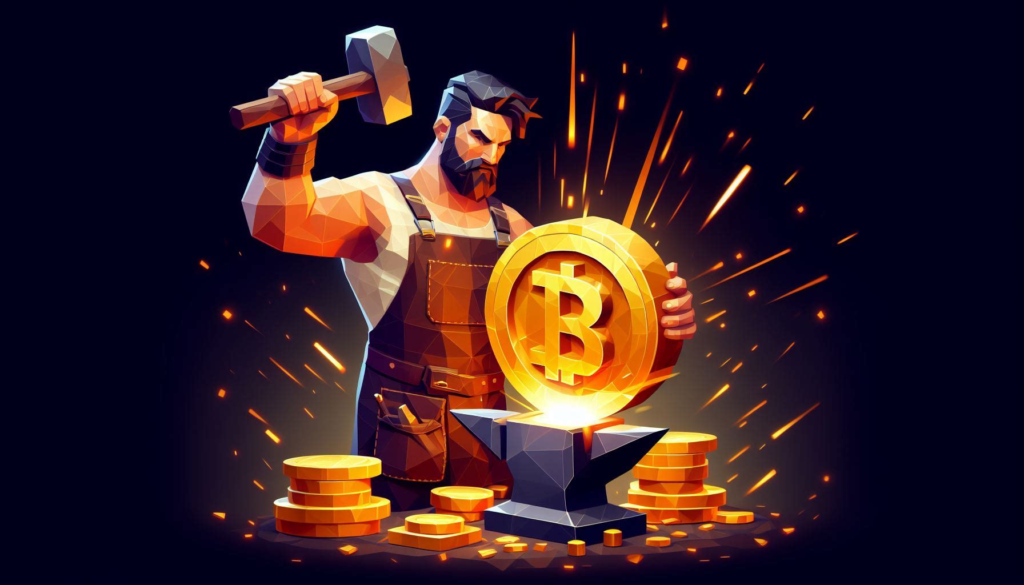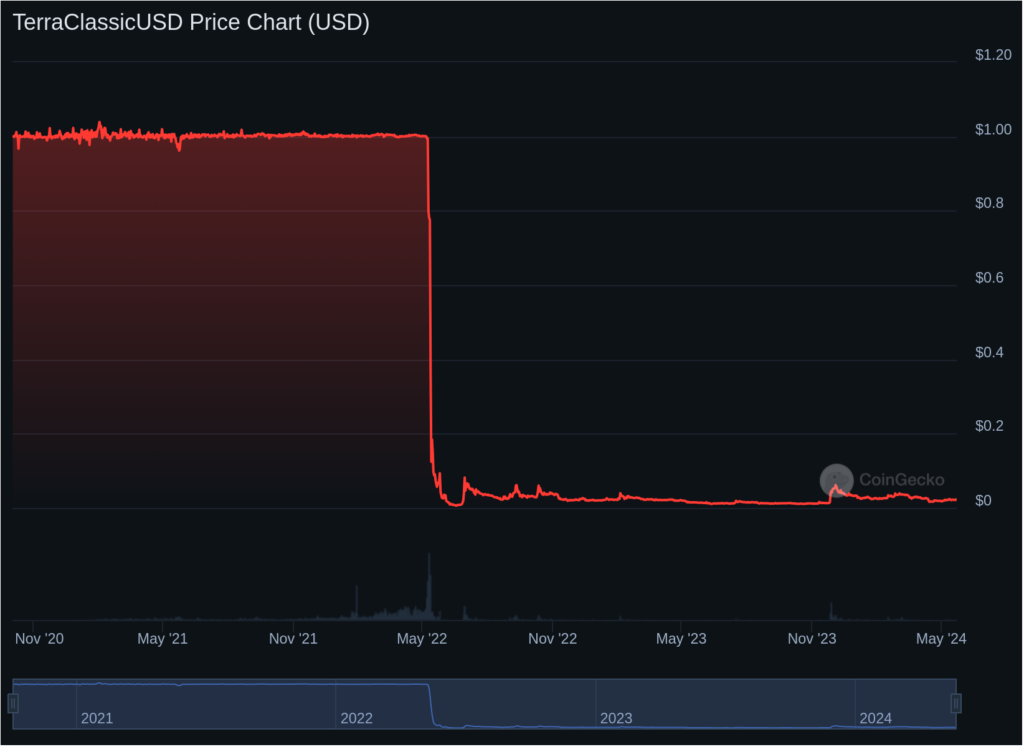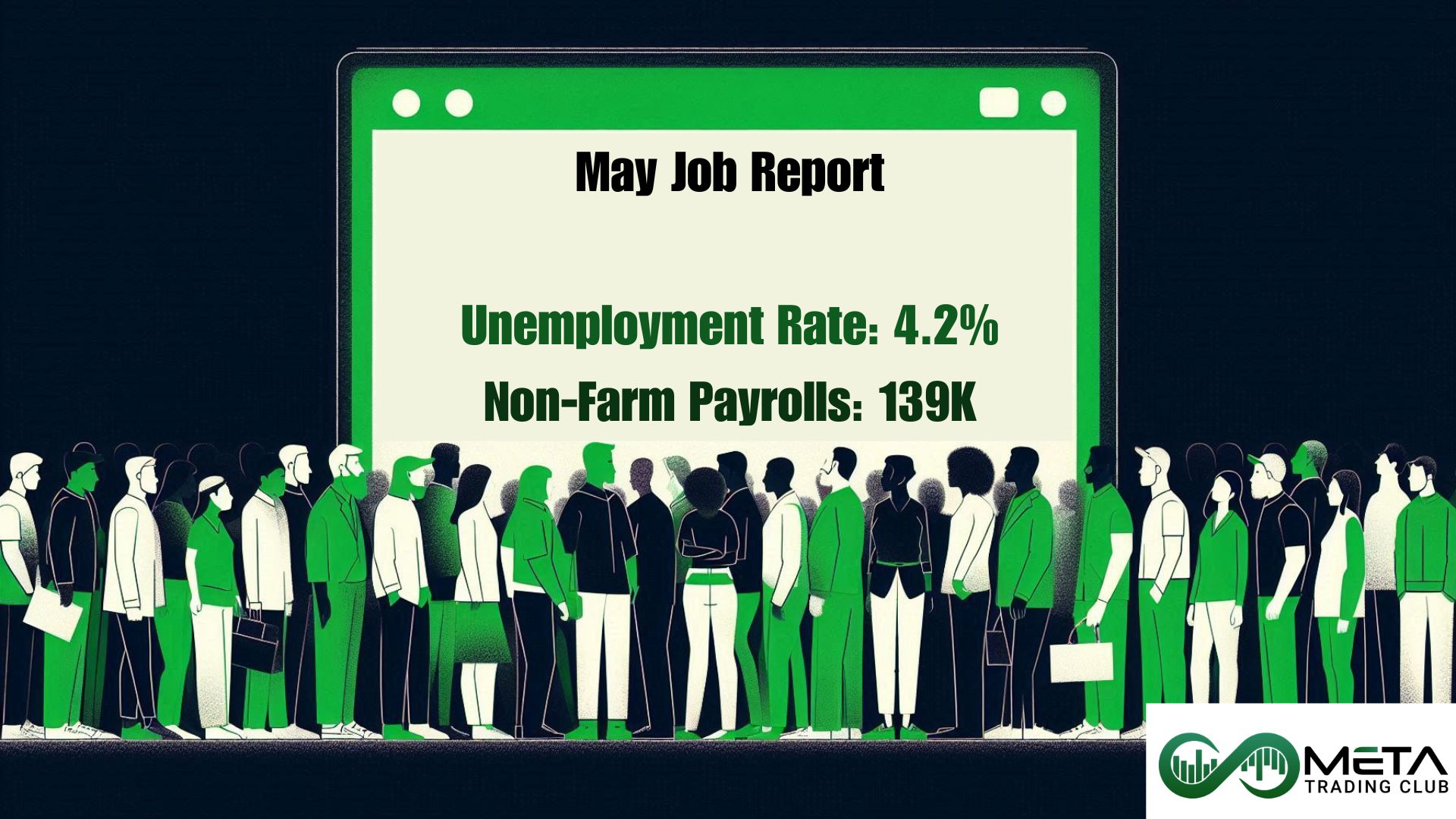Cryptocurrencies are digital or virtual currencies secured by cryptography, making them nearly impossible to counterfeit. Unlike traditional money, they operate without the oversight of a central bank, offering a new frontier in financial freedom.
Bitcoin, launched in 2009, was the pioneer and remains the most iconic of all cryptocurrencies. What sets cryptocurrencies apart is their revolutionary decentralized nature; no single entity holds the reins.
This growing market is the newest playground for investors, brimming with both thrilling opportunities and significant risks. At the heart of cryptocurrencies lies blockchain technology, a marvel of modern innovation that ensures transparency and security through a meticulously maintained distributed ledger.
But why does this lack of central control matter so much? How does being the freshest face in the securities market influence your Trading/Investment strategy? And could the transparency offered by blockchain technology transform the very foundation of financial trust? Join us as we dive into these compelling questions and unravel the fascinating, high-stakes world of cryptocurrencies.
Table of Contents
History of Crypto Currency
Imagine a world where money isn’t controlled by governments or banks, but by the people who use it. This idea, once a far-fetched dream, has transformed into the exhilarating reality of cryptocurrency. But how did we get here?
Let’s travel through the corridors of time and witness the history of digital money, from its conceptual roots to the revolutionary impact of Bitcoin and Blockchain technology, and finally, how they ignited the explosive growth of decentralized finance (DeFi)
The Dawn of Digital Money
What if we could send money as easily as we send an email? This question sparked the imagination of computer scientists and cryptographers in the late 20th century. The first inklings of digital currency emerged in the 1980s with projects like David Chaum‘s DigiCash.
Chaum, a pioneer in cryptography, envisioned an anonymous digital currency that would preserve user privacy while allowing for secure transactions. Though DigiCash eventually fizzled out, it laid the groundwork for future innovations.
In the 1990s and early 2000s, several digital currency systems were proposed, including B-money by Wei Dai and Bit Gold by Nick Szabo. Both concepts introduced key ideas such as decentralized control and digital scarcity, but they lacked a crucial element: a way to prevent double-spending without relying on a central authority.
The Birth of Bitcoin and Blockchain Technology
Enter 2008. Amidst the global financial crisis, an enigmatic figure known only by the pseudonym Satoshi Nakamoto published a whitepaper titled “Bitcoin: A Peer-to-Peer Electronic Cash System.” This document outlined a revolutionary idea: a decentralized digital currency powered by a novel technology called Blockchain.
But what makes blockchain so groundbreaking? Imagine a ledger, but instead of being kept by a single bank, it’s distributed across countless computers worldwide. Each transaction is recorded in a “block,” and these blocks are linked together in a “chain.” This structure ensures that once a transaction is added, it can’t be altered or deleted, providing unprecedented security and transparency to all users.
In January 2009, Nakamoto mined the first Bitcoin block, known as the “Genesis Block,” embedding the text “The Times 03/Jan/2009 Chancellor on brink of second bailout for banks” as a nod to the failing traditional financial system. Bitcoin was born, offering a decentralized alternative to state-backed currencies.

The Rise of Decentralized Finance
Bitcoin’s success sparked a wave of innovation, leading to the creation of numerous other cryptocurrencies and blockchain platforms. But Bitcoin was just the beginning. The next leap came with the advent of Ethereum in 2015, introduced by a young Canadian programmer named Vitalik Buterin.
Ethereum expanded the possibilities of blockchain technology by enabling “smart contracts“, self-executing contracts with the terms directly written into code, minimizing the risk of malicious behavior from either parties.
These smart contracts are the backbone of decentralized finance, or DeFi. But what exactly is DeFi, and why is it so revolutionary?
DeFi encompasses a range of financial services, including lending, borrowing, trading, and earning interest, all without intermediaries like banks. Instead, users interact with decentralized applications (dApps) on the blockchain, enjoying greater control over their assets and the potential for higher returns.
The DeFi Revolution
Consider this: in traditional finance, you need a bank’s approval to get a loan, and you pay hefty fees for the service. In the DeFi world, not only can you take out a loan for minimal interests, you can also lend your money to other users or platforms and earn passive income.
The barriers to entry are lower, the loan is safe and overcollateralized, the fees are often minimal, and the possibilities are boundless.
But why should you care about DeFi? From the opportunity of trading countless coins and tokens with no identification to lucrative investments, from providing liquidity to trading pools and receiving a certain percentage of all trades to facilitating transactions via mining or Nodes, free airdrops to games that generate you a side income, the DeFi revolution changed the game of finance.
Parallel to countless opportunities, the Gold-Rush of crypto mining and Proof of Work (POW) concept marked a spike on the price of tech stocks and assets, such as Nvidia and AMD GPU cards. The demand for GPUs soured as the crypto mining income was much higher and safer than many traditional investment strategies.
But as the saying goes, if something seems too good to be true, it probably is. This revolution gave birth to many entities, one of such were money hungry scammers looking for every opportunity to trap traders and investors alike and make a quick buck in the unregulated wild west of crypto.

Let’s put it this way, the allure of Crypto Paradise, a place where dreams of untold wealth dance in the minds of many, is much like the utopian promises of Communism. Hold your horses before jumping on the hype train, as in both paradises, the reality often diverges from the dream.
In the Crypto Paradise, just like in the land of Communism, a select few seem to hit the jackpot while the rest are left scratching their heads and wallets. It’s like being at a magic show where only a handful get to be the magician’s assistant, while the rest of us are left wondering how the rabbit, the money in this case, disappeared.
Both promise a life of abundance and equality, but in reality, they can resemble a game of musical chairs where there are never enough seats for everyone. Like any other game, the crypto game has its winners and losers and it’s impossible for everyone to win the game.
So, next time someone tries to sell you on the wonders of Crypto Paradise, stay safe stay realistic. Remember that the tropical getaway of the crypto world might seem like a dream come true, but to many feels more like a crowded bus ride to nowhere.
But how can one stay safe in crypto space? Well, a well tested weapon would be sufficient knowledge before investing or trading crypto currencies.
What are Cryptos?
In essence, cryptocurrencies are digital or virtual currencies that use cryptography for security. Unlike traditional money, they aren’t controlled by any central authority.
Instead, they rely on blockchain technology, a decentralized ledger that records all transactions across a network of computers. Sounds straightforward enough, doesn’t it? But hold on, because the rabbit hole goes much deeper.
With over a thousand different blockchains supporting more than a thousand distinct coins and millions of tokens, it’s like the Wild West of the digital age. New coins are minted daily, each promising to be the next big thing.
Then there are the Non Fungible Tokens (NFTs), unique digital assets representing ownership of a specific item or piece of content, from art and music to virtual real estate. It’s a booming marketplace where anything digital can become a collectible.

But let’s be honest, this isn’t just a tech revolution; it’s a digital gold rush. Every day, new projects pop up, each claiming to solve a problem you didn’t even know you had.
So, amidst this dizzying array of digital assets, ask yourself: what problem does cryptocurrency actually solve? Is it the future of finance or just another speculative bubble waiting to burst?
What problems does crypto solve?
So, what real-world problems does cryptocurrency actually solve? Let’s start with the magic of fast international transactions. Imagine sending money across the globe in a matter of minutes, without the outrageous fees and delays imposed by traditional banks.
With cryptocurrencies, geographical borders become irrelevant. It’s as simple as clicking a button, and voilà, your funds are transferred, whether you’re paying a freelancer in the Philippines or buying artisanal coffee beans from Colombia.
Security is another major win for the crypto world. With a seed phrase(a 12 or 24-word code)you can access your digital wallet from anywhere. This phrase is your key to the kingdom, and thanks to the immutable nature of blockchain technology, your wallet can’t be hacked.
Unlike traditional banking systems, which are vulnerable to breaches and fraud, blockchain ensures that your assets are safe and sound as long as you safeguard your seed phrase properly.
Trading cryptocurrencies has also become more accessible thanks to both centralized and decentralized exchanges. Centralized exchanges operate much like traditional stock markets, providing a user-friendly interface and liquidity.
Decentralized exchanges, on the other hand, let you trade directly from your wallet, maintaining control over your assets. This duality offers flexibility and ease of use, making crypto trading a breeze for novices and seasoned traders alike.
Privacy in the crypto world is another key advantage. Every transaction is recorded on the blockchain, ensuring transparency, but as long as you keep your wallet address private, your identity remains hidden.
Unlike traditional financial systems where your transactions can be scrutinized by banks and governments, in the crypto world, your financial activities are your business and no one else’s. Your privacy is paramount, allowing you to conduct transactions with a level of anonymity unheard of in conventional finance.
Of course, this anonymity and ease of use have also turned cryptocurrency into a playground for scammers and cybercriminals. Who knew that democratizing finance would also democratize crime?
Cryptocurrencies have truly cracked the code on how to execute illegal and malicious plans with impunity, giving a whole new meaning to “innovation.”
So, while cryptocurrencies solve many problems, they’ve also generously gifted us with a few new ones, keeping us all on our toes in this wild digital frontier. Because who doesn’t love a good plot twist, right?

Types of Crypto
In the world of cryptocurrencies, the term “coin” refers specifically to digital assets that operate on their own independent blockchain. That’s right, to be considered a “coin,” a cryptocurrency must have its own dedicated network where it plays by its own rules. This distinguishes it from tokens, which rely on the infrastructure of other blockchains.
Cryptocurrencies are typically divided into two main groups: Bitcoin and Altcoins. Bitcoin, the original and most well-known cryptocurrency, stands alone in its category. Everything else falls under the broad and diverse umbrella of Altcoins, which includes Ethereum, Ripple, BNB, and thousands of others, each having their own slice of the crypto pie.
Now, let’s talk about the so-called stablecoins, such as Tether (USDT) and USD Coin (USDC). These are often mislabeled as “coins” because they aim to maintain a stable price relative to fiat currencies like the US dollar.
However, these stablecoins don’t have their own blockchain; instead, they operate on existing blockchains like Ethereum or BNB Smart Chain (BSC). This technicality makes them tokens, not coins.
And here comes the fun part: the stability of these “stable” tokens. Sure, they’re designed to have a price that stays consistent with traditional fiat currencies, providing a safe harbor in the stormy seas of the crypto market.
But let’s be clear, their stability is relative to the wild fluctuations of other cryptocurrencies. In a market where prices can skyrocket or plummet in the blink of an eye, calling anything “stable” is a bit like saying a ship is steady in a hurricane because it’s not capsizing…yet, there were stablecoins such as TerraUSD that has lost more than 90% of its $1 value.

So, while these tokens might seem like safe shores in the crypto storm, just remember, even rocks can get swept away by a big enough wave. Stablecoins can be considered the most important token type, the backbone of crypto trading, they certainly aren’t the only players on the field.
There exists more token types, each serving distinct purposes:
- LP Tokens
- Stable Tokens
- Security Tokens
- Utility Tokens
- Governance Tokens
- Wrapped Tokens
- Non Fungible Tokens (NFTs)
- Meme Tokens (MemeCoins)
Many of these tokens are natives, meaning that an Ethereum based token can most likely be found only on the Ethereum blockchain. Other well-known coins and tokens can move freely between different blockchains, though with much higher fees than transactions on the same blockchain.

To do cross chain transactions, the coin or token itself can not be dragged out of the original chain and pushed inside the other! Wrapped Tokens on the receiving end exist that represent the original coin or token with the same price worth.
How to Trade Cryptocurrencies?
That actually depends on what and how you want to trade Cryptocurrencies. If you intend to use Crypto CFDs and start leverage trading, you can find them in all legitimate centralized exchanges (CEX) like Binance, Coinbase, Kucoin and Kraken.
These exchanges support many blockchains and traders can trade using futures trading or spot trading. Major crypto CFDs like Bitcoin and Etheruem are also supported by some brokerages although they mostly focus on Forex trading.
Alternatively, if you are more interested in trading the vast ocean of tokens, you can use Dextools which covers almost all blockchains and their newly launched tokens. Using Dextools you’ll have access to countless analysis tools, charts, indicators and devs socials to make better decisions.
Your other option for trading a blockchain’s native tokens would be decentralized exchanges (DEX). Originally, these exchanges were developed for specific blockchains, but today, users can trade a wide variety of tokens across multiple chains on each DEX.
To successfully trade these volatile assets and consistently stay profitable, it’s crucial to have a clear vision and a deep understanding of this asset class, its behavior, and how to master it. If you’re eager to discover your inner trader and develop strategies tailored to your unique personality, then don’t wait! book a free discovery call today!
Moving past the subtle art of trading, there’s a popular saying in the crypto space: if you have diamond hands, it’s time to stop trading, start investing, and hold on for the long haul. Embrace the journey and enjoy the ride!
How to Invest in Cryptocurrencies?
Before diving into the world of cryptocurrency investments, it’s essential to DYOR—Do Your Own Research. Cryptocurrencies are notoriously volatile, making them one of the riskiest assets to invest in. It’s crucial to understand the landscape, the assets, and the technology behind them before committing your hard-earned money.
Now, when it comes to investing in cryptocurrencies, you have two main paths ahead of you. The first path is the so-called “safe” option: investing in the big players like Bitcoin, Ethereum, Ripple, and Binance Coin.
This is about as safe as you can get in the wild west of crypto. Just remember, in the land of crypto, “safe” is a relative term. But hey, who doesn’t want to play it safe in one of the most unpredictable markets on the planet?
On the other hand, there’s the risky route, investing in tokens, particularly memecoins. This path is not for the faint of heart and, quite frankly, we don’t recommend it. However, it’s absolutely a possibility.
These memecoins have the potential to skyrocket 1000X in a matter of hours, and they can crash to zero even faster. They often have no inherent value, no substance, and are driven purely by hype. Think of them as the rollercoasters of the crypto world, exhilarating but with a significant chance of ending in tears.
Then, there’s the thrill of participating in presale tokens or buying them shortly after launch. This can be a risky endeavor, but as they say, “with high risk comes high rewards.” Investing in memecoins, NFTs, or DeFi projects can feel a lot like buying a lottery ticket worth hundreds of dollars.

However, if you play your cards right, your chances of winning massive profits might just be higher than an actual lottery ticket. Just a tiny bit higher though, that is because after all, even the best cards can lead to a house of cards tumbling down!
Regardless of your choice, to buy, own, and hold cryptocurrency for the long term, you’ll need a wallet. Crypto wallets come in two main types: cold and hot wallets. Cold wallets are much safer because they are based on hardware devices, making them less vulnerable to hacking attempts.
Hot wallets, on the other hand, are applications that can be installed on mobile devices, personal computers, or used as browser extensions. Hot wallets are constantly connected to the internet whereas cold wallets are not. Hot wallets are relatively safe, but if you are a serious holder, nothing can compete with the security of hardware-based cold wallets.
Once you’ve purchased your desired crypto asset, it will either move automatically to your ledger device or you’ll need to manually request the withdrawal of assets or funds from the exchange.
In the case of a decentralized exchange (DEX), they always send the purchased asset directly to your wallet. However, with a centralized exchange (CEX), you might need to take a few extra steps to ensure your assets are safely transferred to your wallet.
Remember, in the world of crypto, security is paramount. Make sure to choose the right wallet for your needs and always double-check your transactions to protect your investments.
Wrapping Up the Crypto Journey
As we come to the end of our exploration into the world of cryptocurrencies, it’s clear that this dynamic and rapidly evolving space holds immense potential.
From the intriguing history of crypto and the diverse types of digital currencies to understanding various tokens and exchanges, you’ve gained a solid foundation.
We’ve also delved into the ways you can trade or invest in crypto and highlighted the importance of choosing the right wallet for your needs.
The world of cryptocurrency is as exciting as it is unpredictable. Whether you’re just starting or looking to deepen your knowledge, remember that continuous learning and staying informed are key. Embrace the journey, stay curious, and who knows, your next step might just be the one that changes everything.
To stay updated with the latest trading news and insights, be sure to follow us on Instagram and YouTube. Thank you for reading, and stay tuned for more valuable content and updates in the ever-evolving realm of crypto!
FAQ
- What are crypto currencies?
Cryptocurrencies are digital or virtual currencies that use cryptography for security. They operate on decentralized networks based on blockchain technology, making them secure and immune to central control.
- What is a crypto wallet?
A crypto wallet is a digital tool that allows you to store, send, and receive cryptocurrencies. There are two main types: hot wallets, which are connected to the internet, and cold wallets, which are offline and offer greater security.
- What is DeFi?
DeFi, or Decentralized Finance, refers to financial services that use blockchain technology to operate without intermediaries like banks. This includes lending, borrowing, trading, and earning interest on cryptocurrencies in a decentralized, peer-to-peer manner.
- What types of Crypto are there?
There are several types of cryptocurrencies, including Bitcoin, Altcoins(like Ethereum, Ripple and Litecoin), Stablecoins(like USDT and USDC), and finally Tokens (like Solana memecoins and wrapped Tokens).
- What are Crypto Tokens?
Crypto tokens are digital assets created on existing blockchains. They can represent various things, such as ownership in a project, access to services, or other cryptocurrencies.









